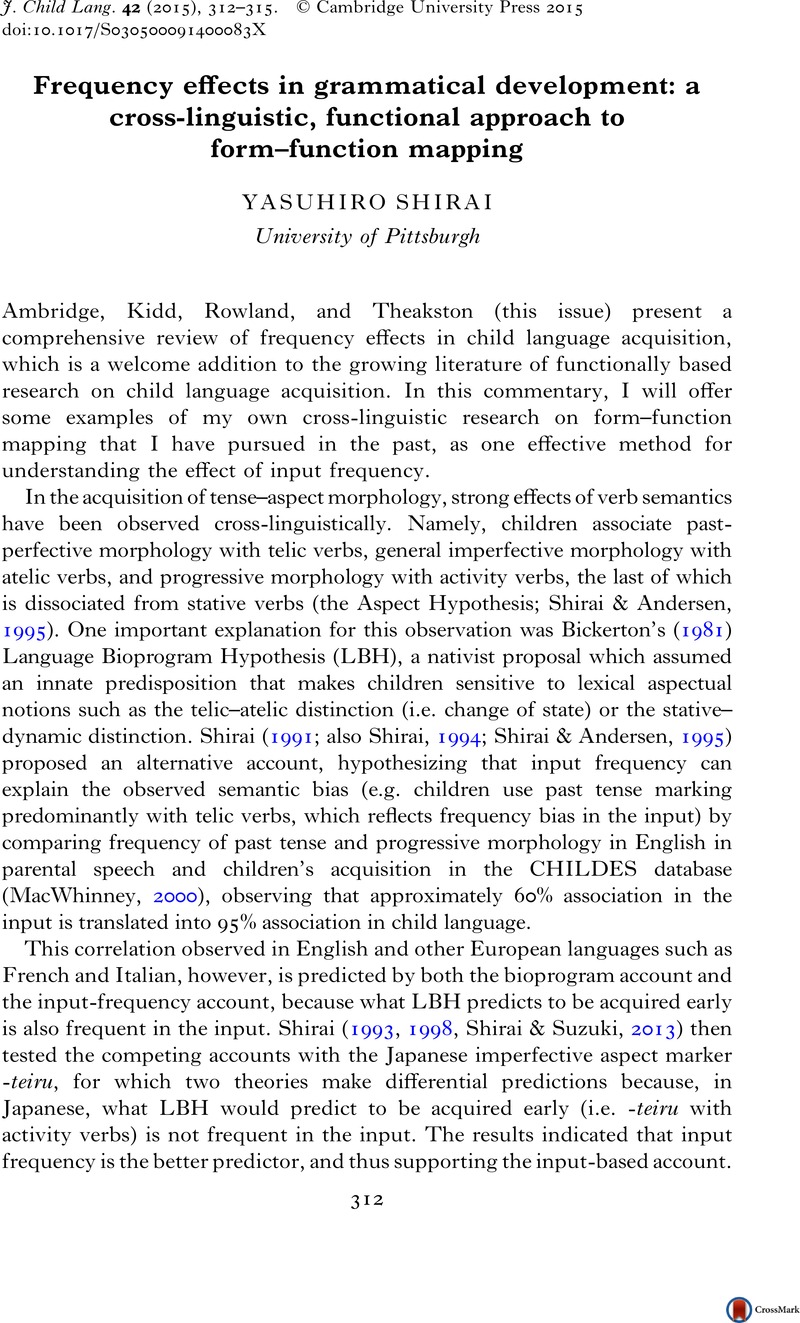Crossref Citations
This article has been cited by the following publications. This list is generated based on data provided by Crossref.
Owen Van Horne, Amanda J.
Curran, Maura
Larson, Caroline
and
Fey, Marc E.
2018.
Effects of a Complexity-Based Approach on Generalization of Past Tense –
ed
and Related Morphemes
.
Language, Speech, and Hearing Services in Schools,
Vol. 49,
Issue. 3S,
p.
681.



